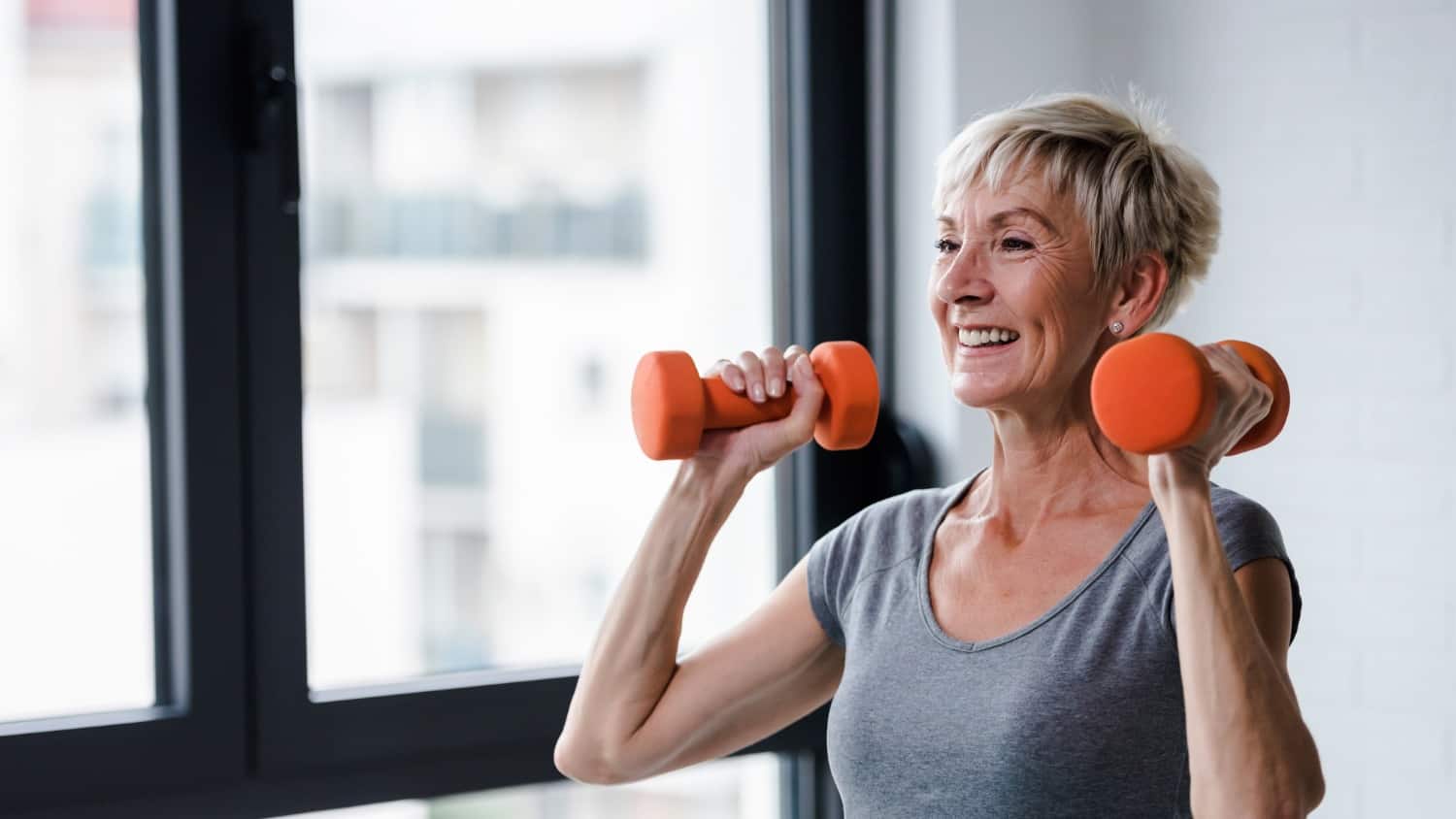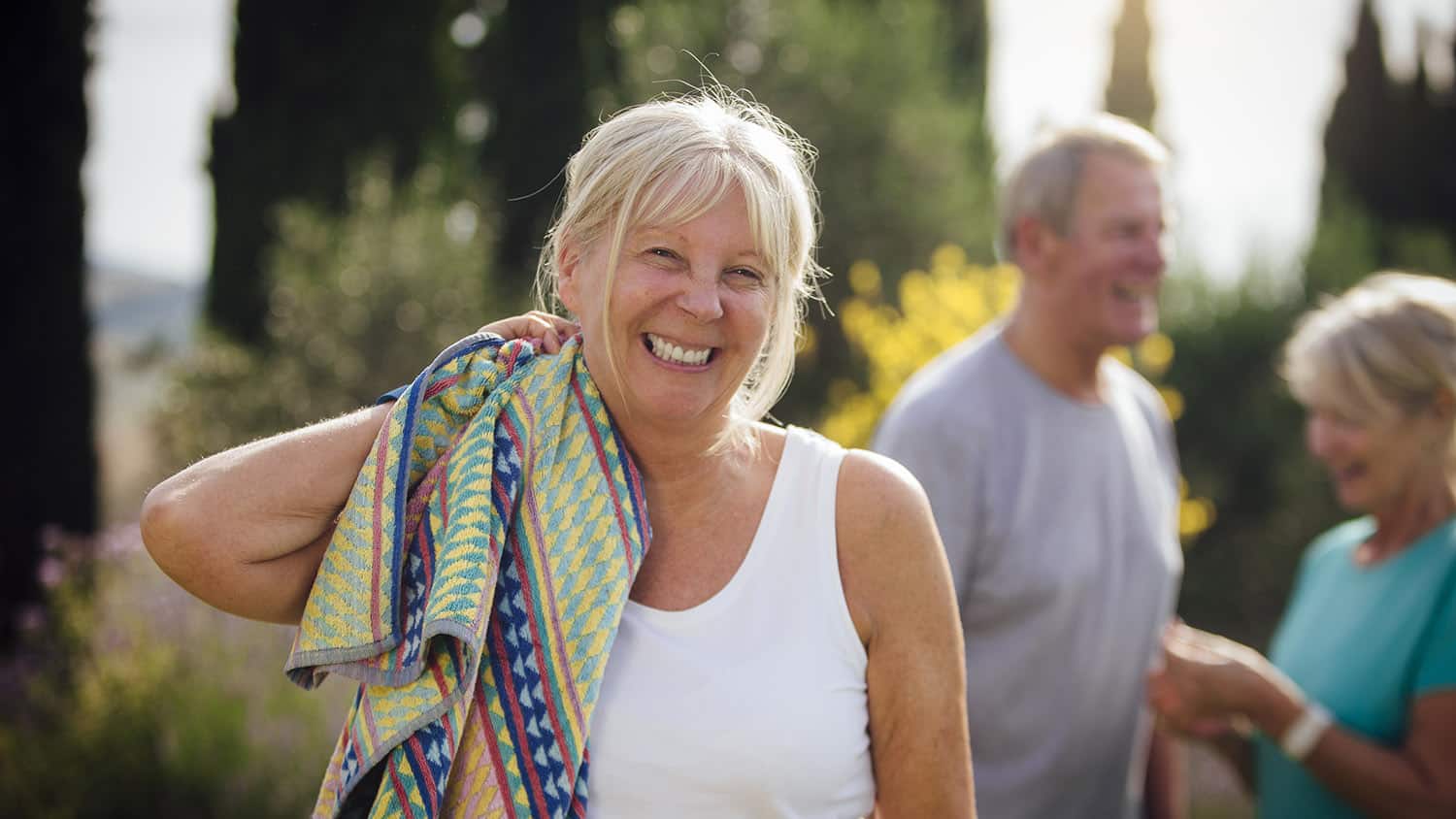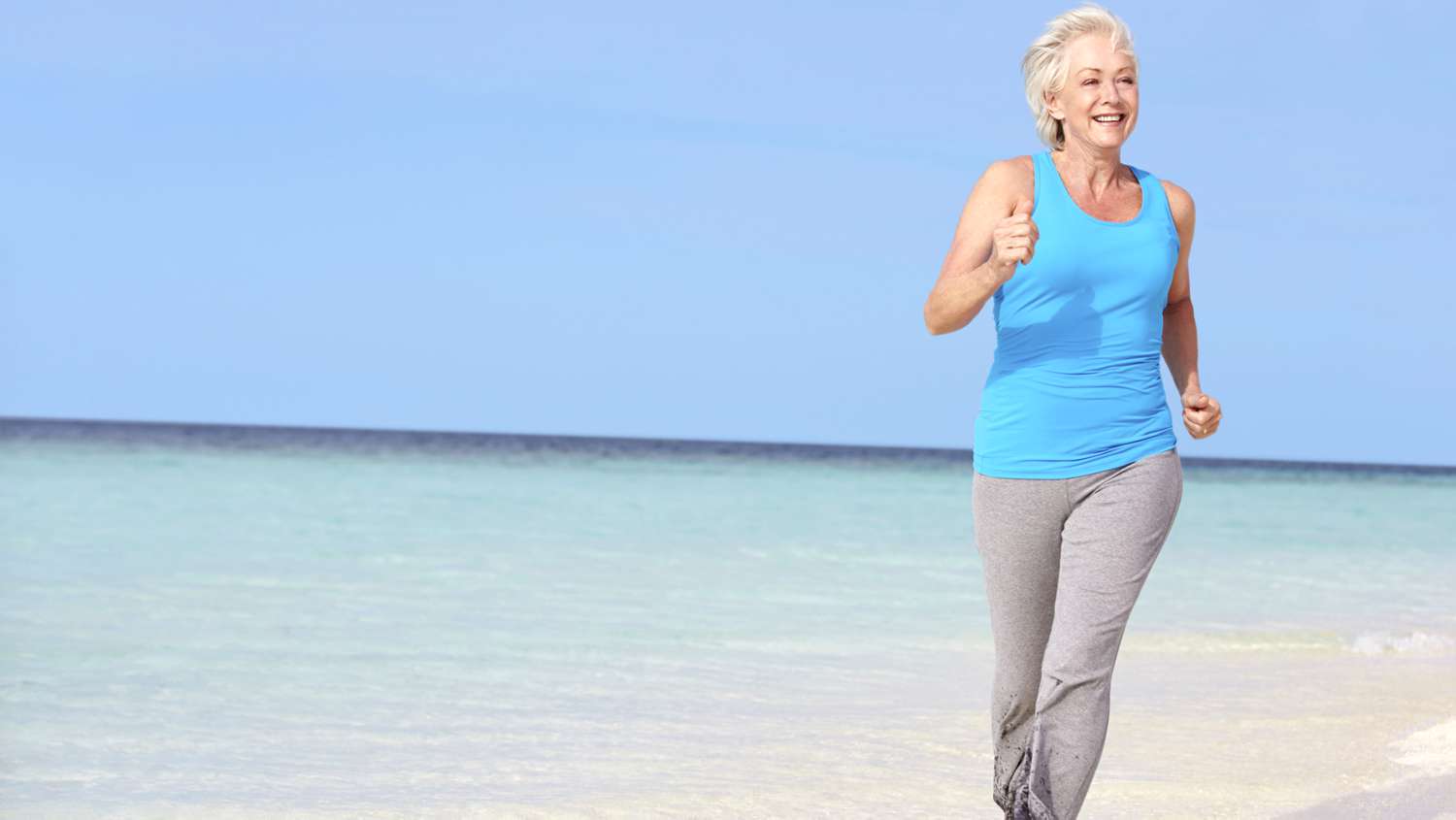
4 Actions to Take Now to Help Prevent or Reverse Low Bone Density and Osteoporosis
I knew I was a poster child for low bone density as a small framed, petite woman, but as a movement and Pilates teacher, I was shocked and embarrassed to discover I had osteoporosis in my femoral neck.
Luckily, I was already certified in Buff Bones exercise for osteoporosis, which made me familiar with studies on exercise and nutrition for bone health. Diving into osteoporosis research was natural for me.
Taking into account what I learned, I began walking with a weighted vest, and I created a research-based weightlifting program for bone health that I will follow for the rest of my life.
Additionally, my research led me to take action in the ways I outline below. I reversed my osteoporosis in two years. I cannot tell you that any one thing was the magic bullet, but I can tell you that I feel much stronger and more confident today.
Review Your Intake of the Necessary Nutrients for Bone Formation
Contrary to popular belief, it takes more than calcium and vitamin D for the body to form bone. There are 20 nutrients that are necessary for new bone formation! I suggest focusing on the following seven to start.
If you’re not getting enough nutrients with your food, use complementary supplements of high quality to help you in your battle with Osteoporosis.
Calcium
Take calcium for bone formation and strength. Get it from greens, nuts, bone marrow, seaweed, and figs. Milk is a much debated source so I don’t make it a primary focus but that is a personal choice.
Magnesium
Magnesium boosts calcium absorption and helps in the production of the bone preserving hormone. It regulates bone breakdown and is involved in the conversion of vitamin D to active form. Best sources are spinach, wild rice, flax, beans, almonds, cashews, avocado, squash, and tofu.
Vitamin D3
D3 is vital for calcium absorption. You can get it from sunshine, fatty fish, beef liver, eggs, and butter.
Vitamin K2
Another vitamin that helps with bone structure and binding of calcium to bone is K2. It’s found in natto, hard cheese, and fermented food.
Zinc
As a micromineral, zinc is involved in bone protein recycling, bone healing, and bone building with collagen protein threads. Get it from wheat germ, oysters, liver, and crab meat.
Manganese
Manganese is involved in bone cartilage and bone collagen formation. You can take it with whole grains, leafy vegetables, greens, and blackstrap molasses.
Boron
Boron helps with the proper metabolism of calcium, magnesium, and vitamin D. Best sources are chickpeas, almonds, beans, prunes, and raisins.
Add Weight Bearing Exercise into Your Activities – A Must for Bone Formation
Muscles and bones are a connected system. Strengthening your muscles with external load (weights) creates forces that send signals to the bones to build more bone as an adaptation to the force.
In addition, the load is site specific. Thus, one must load at the hip, the spine, the wrist, and so on to protect all these areas.
There is a direct dose relationship with using load. This means that even a little weight has some benefits. Heavy weight and lifting more than once a week creates even more benefits!
Lifting weights does not have to be intimidating. You can start out at home, learning the proper form, then progressing to increasing loads. My Bone Bootcamp program begins with the basics of breathing and alignment and takes you slowly through a home-based program that targets bone building sites.
Once comfortable, many of you will want to lift heavier weights at a gym. It is always best to seek out a qualified professional at the gym of your choice to make sure you know how to use all their equipment safely.
A weighted vest is another way to incorporate weight bearing exercise into your life. Wear it when you take your regular walks. Ask your doctor or physical therapist to determine if you are a good candidate for a vest.
Should you purchase a vest, invest in one that has pockets that allow for adding weight in ½-pound increments. Ideally, the goal is to wear 10% of your body weight in your vest.
My favorite vest is the Ironwear Fitness Vest.
Make sure you’re getting enough protein while you weight train as this will assist in building bone as well. Use this calculator to see how much protein you need.
Prioritize Sleep
An often overlooked component is rest. We know that 7 to 9 hours of sleep are absolutely crucial for top performance of our mind and body. Not only does the brain restore and repair during sleep, but so does the body (which includes your bones).
Matthew Walker, a renowned expert on sleep and its impact on your mind and body, explains in his book “Why We Sleep” that sleep reboots the body systems and not just the brain.
Although the direct causal link from sleep quality and quantity to osteoporosis has not been definitively shown in research, the association is clear and evidences itself in many, many studies.
Since we know that sleep is important for brain health, is there a downside to prioritizing sleep? Absolutely not!
Incorporate Balance Work into Your Daily Routine
We know that falls can be particularly damaging for individuals with osteoporosis. We also know that the fear of falling can be a huge barrier to bone building activities like moving and exercising.
The best preventative for falling is exercise and balance training combined.
What you can do:
Train Your Brain/Body Connection with Your Vestibular System
One of my favorite little “training” tools can be done seated, standing or lying down. Try lying on the ground or couch with your knees bent and your feet on the floor or couch.
- Begin by fixing your eyes on a spot or object on the ceiling. While you keep your gaze on this point, move your head to make a yes nod. Up and down.
- Then change and move your head to signal “no” while keeping your gaze on the object.
- Next, keep your head still in the straightforward position and play with looking left and right with only your eyes. Then try up and down.
- Try this back and forth for two or three rounds. You will be surprised at the greater ease you’ll feel with your balance.
Train Your Balance in Novel and Unpredictable Ways
Falls often happen at night or on uneven surfaces, so training on uneven surfaces is important:
- Walk on a row of pillows.
- Walk over stones barefoot.
- Perform a hip hinge with your feet close together (chair or counter near by).
- Practice your hip hinge with one foot in a kickstand position (less weight on that foot).
- Try standing still with your eyes closed (hold onto a counter at first).
To combat your osteoporosis or osteopenia diagnosis, there are quite a few actions you can take. It’s my goal to help you feel more empowered as you deal with the idea of low bone density instead of overwhelmed or stuck.
I hope that you leave this article with a few next steps that you can begin to implement in your life today. Small efforts do add up!
What do you do to protect and build your bones and muscles after menopause? What supplements do you take in addition to a nutritious diet? How much sleep do you usually get at night? Please share with our community!
Tags Fitness Over 60






